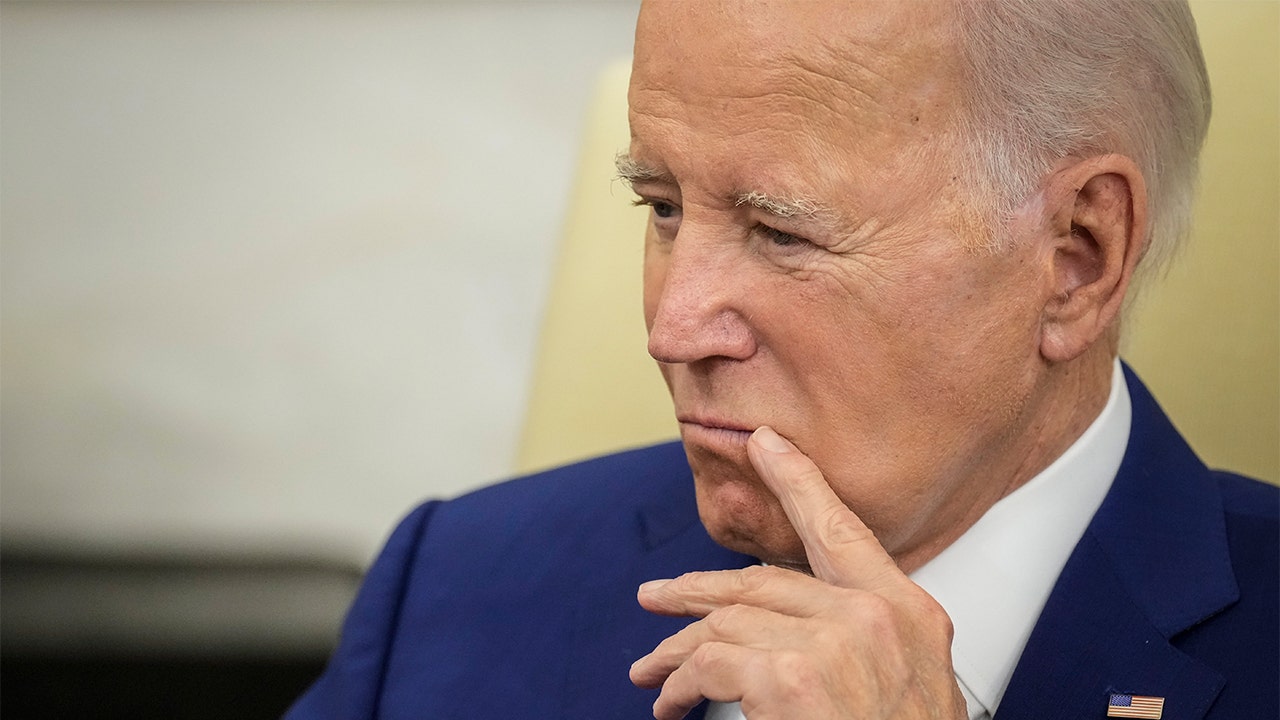New York
Making a Home and Avoiding Deportation in New York City

The recent influx of migrants crossing the southern border has been one of the biggest in American history. Many were turned back, but more have been allowed to stay and fight deportation in court. Thousands have headed to New York City to try their luck.
Todd Heisler/The New York Times
Each of the five followed a different path, but they are all trying to create a life here, and they all worry about the likelihood that, eventually, they could be ordered to leave.
We wanted to understand what might happen to them next.
The people we spoke with were all given notices to appear in immigration court when they crossed the border, and they are at various stages of the deportation process, which can take years. The Biden administration has given temporary protection from deportation to people from places like Venezuela and Ukraine, where conditions have been deemed too dangerous for migrants to return.
Some have applied for asylum, but it can take many months to submit an application, and migrants are not allowed to apply for a work permit until 150 days later. Many spend their first months or years in New York in limbo, unable to work legally, waiting for hearings and permits, often in uncertain living situations.
Step 1: Finding shelter
When they arrive in New York, many migrants have little money, and many opt to stay in one of the city’s homeless shelters. Nearly 140,000 migrants have checked into the city’s intake system in the last year and a half; about half that number are living in shelters today.
The city, strained past its breaking point, is now forcing shelter residents to reapply after certain time limits (30 days for single adults; 60 for families). Migrants say the rules are making it hard to hold jobs and could cause them to miss important mail about their immigration cases.
Milton Vargas was one of four people we spoke with who were placed in shelters.
After arriving in New York last year, along with his pregnant wife and four children, they traveled to an intake center for homeless families in the Bronx. After waiting there for nine hours, they were sent to a hotel near Central Park.
There, they rested for 36 hours. “I didn’t want to interrupt my seven-month-pregnant wife’s rest, and we didn’t go out,” Mr. Vargas said. Eventually they learned about a nearby church where they could get clean clothes donated by neighbors. “Little by little we understood how to navigate the neighborhood,” Mr. Vargas said.
After Eduardo Gómez arrived in New York last year, a friend picked him up from the Port Authority Bus Terminal and took him to Randall’s Island, where the city had set up an 84,400-square-foot tent to house migrants.
He lived in four different shelters over the course of nearly a year. Then, he was asked to leave. “The people in the government wanted us to leave the shelter, but they did not understand all the confusion we were experiencing,” he said. “It is not an easy system to navigate.”
He paid $450 to sleep on a couch in an apartment in Williamsburg, Brooklyn, for a month. Then, he and a friend found a mobile home in Queens, which they now rent for $1,200 per month.
When Gaoussou Ouattara arrived at Kennedy Airport in August, he was unable to reach anyone at the organization that had flown him to New York. He took a taxi to Manhattan and tried again to get in touch with the nonprofit, with no luck. That night, he slept on the street. The next day, he contacted people he had met on his journey to the United States, who told him to go to the Roosevelt Hotel, where he went through the city’s intake process and was placed in a shelter in Harlem.
Manuel Rodríguez had left the few belongings he had in Mexico, and arrived in New York in March with only the clothes he was wearing. His sister’s husband picked him up from Kennedy Airport.
They went to Flushing, Queens, and his brother-in-law lent him $200 to buy new clothes: underwear, socks, pants, T-shirts and a sweatshirt. “Only the essentials, because I have nothing,” he said. They ate that day in Flushing and then went back to a room his brother-in-law was renting in Whitestone, Queens, for $1,000 per month, where he had invited Mr. Rodríguez to stay.
Step 2: Earning money
For most migrants, the waiting period for a legal work permit is long, sometimes years. During those long waiting periods, many try to find ways to support themselves.
Eduardo Gómez was one of four people we spoke with who found odd jobs that pay cash.
When he arrived in New York last year, he quickly started looking for a way to earn money. He had worked as an electronics technician repairing cell phones in Venezuela and eventually found a job installing security cameras, but it lasted only 15 days. “Everyone asked me for papers and I didn’t even know what they were talking about,” he said.
In early 2023, Mr. Gómez learned he may qualify for asylum, but he needed money for a lawyer. He paid a staffing agency in Queens $150 and was sent to a job at a food packaging company in Flushing. He was paid $540 a week for 60 hours of work.
“I lasted two weeks there because they exploited me a lot and I just wanted the money to buy a motorcycle to start delivering food,” Mr. Gómez said.
After Jorda Colomer and her family were placed in a shelter last year, they found a church that provided them with clean clothes, and she and her husband enrolled their son in school. Then they set out to look for jobs. They left cover letters at businesses in Hell’s Kitchen, the Upper West Side, Midtown, Queens and Brooklyn.
Finally, Ms. Colomer met a man at another church who paid her $20 to clean his home for five hours, she said. “Everyone told me that he was exploiting me, but I had nothing and $20 was something, and he gave me food,” Ms. Colomer said. “A month later he raised it to $40 per day.”
She quit to take care of her children, and eventually her husband, Floyd, found a job cleaning a supermarket in the Bronx.
Gaoussou Ouattara volunteers to help other migrants. He uses his language skills to help people sign up for IDNYC cards, and to welcome migrants who arrive on buses at the Port Authority. The work is nonstop, he said. He often wakes up at 3 a.m. to go to the Port Authority, and sometimes spends more than 12 hours a day meeting new arrivals and directing them to the Roosevelt Hotel to be placed in a shelter.
“There’s no salary,” he said, adding: “In fact, I need a work permit to be able to work. Maybe with that, I’ll get a good job somewhere, that can pay me? Even if it’s at 15 dollars — I don’t know how much, at 20 dollars — I could have a home, take care of myself and then continue to help them.”
Step 3: Avoiding deportation
For most migrants, the only path to staying in the United States legally is winning asylum.
It is not a straightforward process. Asylum applications are more than 10 pages long, must be filled out in English, and require extensive information and documentation, all of which must match eventual testimony at a hearing. “This is one of the most complicated applications in immigration law and is extremely time consuming,” reads a guide created by the Legal Aid Society.
Most migrants need substantial help from lawyers to compile an application and succeed in subsequent hearings. In recent years, courts in the United States have denied asylum to most applicants.
Manuel Rodríguez was one of four people we spoke with who has submitted an asylum application.
In September, he submitted his application with help from a lawyer he found in Queens, who charged $3,000. Mr. Rodríguez has so far paid the lawyer $1,500, and agreed to pay the rest if he is granted asylum. Because he is from Venezuela, Mr. Rodríguez is eligible for the temporary protection offered by the Biden administration, but he doesn’t know if he will apply, because he is worried that it will be as expensive as the asylum process.
Eduardo Gómez met a paralegal at a church event for migrants in early 2023, who suggested he find a lawyer and apply for asylum. A friend recommended a lawyer in California, whom he met on a video call. The lawyer agreed to help submit his asylum application for $2,500. In March 2023, his application was submitted after he paid the lawyer $1,000, and agreed to pay the rest over time. He is waiting to hear from the lawyer about his court date, but he now has a work permit and, in February, started working as a delivery driver.
Gaoussou Ouattara does not believe he can afford a lawyer who would help him through the entire asylum process, beyond submitting the application. Much of what he knows about the process he learned from speaking to other migrants. He has heard that lawyers who provide full representation can cost $5,000 to $7,000, and that free lawyers are hard to find.
Milton Vargas and Jorda Colomer submitted applications with help from a nonprofit organization, Project Rousseau, which provides free representation for children and families.
“Both Milton and Jorda have a wait that will be many years long,” said Andrew Heinrich, the lawyer at Project Rousseau who is representing Mr. Vargas and Ms. Colomer.
“Someone arriving in New York today should have the same expectations,” he said.

New York
Critics Fault ‘Aggressive’ N.Y.P.D. Response to Pro-Palestinian Rally

Violent confrontations at a pro-Palestinian rally in Bay Ridge, Brooklyn, on Saturday reflected what some local officials and protest organizers called an unexpectedly aggressive Police Department response, with officers flooding the neighborhood and using force against protesters.
At the rally, which drew hundreds of demonstrators, at least two officers wearing the white shirts of commanders were filmed punching three protesters who were prone in the middle of a crosswalk. One officer had pinned a man to the ground and repeatedly punched him in the ribs, a 50-second video clip shows. Another officer punched the left side of a man’s face as he held his head to the asphalt.
The police arrested around 40 people who were “unlawfully blocking roadways,” Kaz Daughtry, the department’s deputy commissioner of operations, said on social media on Sunday.
Mr. Daughtry shared drone footage of one person who climbed on a city bus, “putting himself and others in danger.” The Police Department, he wrote, “proudly protects everyone’s right to protest, but lawlessness will never be tolerated.”
Neither Mr. Daughtry nor the police commented on the use of force by officers. A spokeswoman for Mayor Eric Adams did not immediately respond to a request for comment about the police response. The Police Department’s patrol guide states that officers must use “only the reasonable force necessary to gain control or custody of a subject.”
Bay Ridge has a significant Arab American population and hosts demonstrations in mid-May every year to commemorate what Palestinians call the Nakba, or “catastrophe” — when hundreds of thousands of Palestinians fled or were forced from their homes during the war that led to Israel’s founding in 1948.
Andrew Gounardes, a state senator and a Democrat who represents the area, said local politicians had been in touch with the commanding officer of the 68th police precinct before the preplanned protest and said there had been no indication that there would be such a heavy police response. He called the videos he saw of the events “deeply concerning.”
“It certainly seems like the police came ready for a much more aggressive and a much more confrontational demonstration than perhaps they had gotten,” he added.
Justin Brannan, a Democrat who is the city councilman for the area, said the protest was smaller than last year’s but that officers had come from all over the city to police it. He said their approach appeared to be directed by 1 Police Plaza, the department headquarters in Manhattan.
“These were not our local cops. Clearly, there was a zero-tolerance edict sent down from 1PP, which escalated everything and made it worse,” Mr. Brannan said.
“I’m still waiting on information and details about the arrests that were made,” he added, “but from my vantage point, the response appeared pre-emptive, retaliatory and cumulatively aggressive.”
The Republican state assemblyman whose district includes parts of Bay Ridge, Alec Brook-Krasny, had a different perspective. He said an investigation would determine whether the officers’ actions were warranted, but he said some protesters were “breaking the law” by refusing to clear the street.
“I think that those bad apples are really hurting the ability of the other people to express their opinions,” Mr. Brook-Krasny said.
Some local residents supported the police and said they were tired of the protests’ disruptive impact. “Enough is enough,” said Peter Cheris, 52, a 40-year resident of Bay Ridge, who said he had viewed the videos of the protest. “If you’re going to break the law, you deserve it,” he said.
Donna Lieberman, the executive director of the New York Civil Liberties Union, singled out the presence of the Police Department’s Strategic Response Group, a unit that is sometimes deployed to protests and has been the subject of several lawsuits brought by the civil liberties union and other groups.
The police unit’s handling of the demonstration “was a violation of New Yorkers’ right to speak out and risks chilling political expression,” Ms. Lieberman said in a statement. “N.Y.C.L.U. protest monitors witnessed violent arrests, protester injuries, and even arrests of credentialed members of the press.”
She added: “The continual pattern of N.Y.P.D. aggression against pro-Palestine demonstrators raises important questions about the city’s disparate treatment of speakers based on their message.”
Abdullah Akl, an organizer with Within Our Lifetime, the pro-Palestinian group that organized the protests, said the response took organizers aback, particularly for a demonstration that occurs every year in Bay Ridge and is known to be frequented by families with children.
“It was really an unusual and unprecedented response,” Mr. Akl said.
He said he witnessed two men being pushed to the ground. One of them can be seen in a video with blood streaming down the side of his face. Nerdeen Kiswani, chair of Within Our Lifetime, said three protesters — including the two who can be seen being punched — were treated for their injuries at hospitals.
The Police Department has arrested hundreds of demonstrators since street protests began shortly after the Hamas attack on Israel on Oct. 7 and Israel’s subsequent invasion of Gaza. The protests have been largely peaceful, with few injuries or violent clashes.
In a turning point, on April 30 officers cleared Hamilton Hall at Columbia University, which had been occupied by protesters for 17 hours. Many officers showed restraint during the arrests, though a handful were filmed pushing and dragging students as they removed them from the building.
On Sunday, Ms. Lieberman said police response to the protests in Bay Ridge underscored the importance of implementing the terms of a $512,000 settlement the civil liberties union and the Legal Aid Society reached with the city this month. The settlement set new terms for how the Police Department manages protests, creating a tiered system that dictates how many officers can be sent to demonstrations and limits the use of the Strategic Response Group. It will take years to put into practice.
The settlement is one of several that stemmed from the George Floyd racial justice protests in 2020. Last year, the city agreed to pay $13.7 million to settle a class-action lawsuit that claimed unlawful police tactics had violated the rights of demonstrators in Manhattan and Brooklyn. In March, the city agreed to pay $21,500 to each of roughly 300 people who attended another Black Lives Matter protest in 2020 in the Bronx. Those people were penned in by the police, then charged at or beaten with batons, according to a legal settlement.
Andy Newman and Camille Baker contributed reporting.
New York
Transcript of Trump Manhattan Trial, May 14, 2024

Proceedings
SUPREME COURT
CRIMINAL TERM
NEW YORK COUNTY
PART 59
THE PEOPLE OF THE STATE OF NEW YORK
-against
DONALD J. TRUMP,
Defendant.
:
3503
INDICTMENT #
71543/2023
Falsifying Business
Records First Degree
BEFORE:
100 Centre Street
New York, New York 10013
May 14, 2024
HONORABLE JUAN M. MERCHAN,
JUSTICE OF THE SUPREME COURT
APPEARANCES:
FOR THE PEOPLE:
ALVIN L. BRAGG, JR., ESQ.
New York County District Attorney
BY: JOSHUA STEINGLASS, ESQ.,
MATTHEW COLANGELO, ESQ.,
SUSAN HOFFINGER, ESQ.,
CHRISTOPHER CONROY, ESQ.,
REBECCA MANGOLD,
ESQ.,
KATHERINE ELLIS, ESQ.,
Assistant District Attorneys
FOR THE DEFENDANT:
BLANCHE LAW
BY: TODD BLANCHE, ESQ.
EMIL BOVE, ESQ.
KENDRA WHARTON, ESQ.
STEPHEN WEISS, ESQ.
NECHELES LAW, LLP
BY: SUSAN NECHELES, ESQ.
GEDALIA STERN, ESQ.
SUSAN PEARCE-BATES
Principal Court Reporter
LAURIE EISENBERG, RPR, CSR
LISA KRAMSKY
THERESA MAGNICCARI
Senior Court Reporters
Lisa Kramsky,
Senior Court Reporter
New York
Transcript of Trump Manhattan Trial, May 13, 2024

M. Cohen Direct/Hoffinger
3277
1
was there at The Trump Organization about executives coming in
2
to meet with Mr. Trump?
3
A
Mr.
Trump had an open-door policy, which, if there was
4
5
6
somebody in there, you waited; and if not, you knocked on the
door, and I would say, “Boss, do you have a second?”, and I
would walk right in.
7
Q
And others did the same, to your knowledge?
8
A
9
To my knowledge, yes.
Now, when you met with Mr. Trump at The Trump
Organization, in his office, did you, generally, need
10
–
I’m
11
sorry.
12
Did you, generally, record those meetings in your calendar?
13
A
No, ma’am.
14
15
16
As part of your work at The Trump Organization, did
you feel that it was part of your job to keep him updated on
matters that you were handling for him?
17
A
Yes.
It was actually required.
18
19
20
21
22
23
A
Tell us what you mean by that.
When he would task you with something, he would then
say, “Keep me informed. Let me know what’s going on.”
And what he was saying, what everybody did is, as soon as
you had a result, an answer, you would go straight back and
tell him. Especially if it was a matter that was troubling to
24
him.
25
So, two things, just to break that down.
Laurie Eisenberg, CSR, RPR
Senior Court Reporter
-

 Movie Reviews1 week ago
Movie Reviews1 week agoIs Coppola’s $120M ‘Megalopolis’ ‘bafflingly shallow’ or ‘remarkably sincere’? Critics can’t tell
-

 Crypto1 week ago
Crypto1 week agoVoice of Web3 by Coingape : Showcasing India’s Cryptocurrency Potential
-

 Politics1 week ago
Politics1 week agoTrump predicts 'jacked up' Biden at upcoming debates, blasts Bidenomics in battleground speech
-

 News1 week ago
News1 week agoA bloody nose, a last hurrah for friends, and more prom memories you shared with us
-
/cdn.vox-cdn.com/uploads/chorus_asset/file/24038601/acastro_STK109_microsoft_02.jpg)
/cdn.vox-cdn.com/uploads/chorus_asset/file/24038601/acastro_STK109_microsoft_02.jpg) Technology1 week ago
Technology1 week agoMicrosoft’s Surface AI event: news, rumors, and lots of Qualcomm laptops
-

 News1 week ago
News1 week agoVideo: A Student Protester Facing Disciplinary Action Has ‘No Regrets’
-

 World7 days ago
World7 days agoPanic in Bishkek: Why were Pakistani students attacked in Kyrgyzstan?
-

 Politics1 week ago
Politics1 week agoAOC, 'baby girl' Marjorie Taylor Greene trade barbs in fiery Garland hearing: 'Are your feelings hurt?'















